We analyze the finest pitches in baseball history and the pitchers who excelled in delivering them. With various pitch types and gripping techniques, our study zeroes in on 16 distinct pitches for a detailed examination.
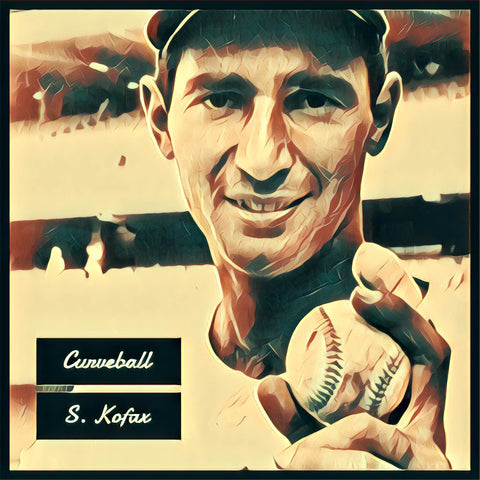
Curveball - Sandy Kofax
One of the oldest known pitches in baseball, the curveball has been around since 1860. While great men have tried to achieve the perfect curve, only a few can really make a case for that claim.
Sandy Kofax curve seem to strike more fear in his opponents hearts than anyone. Kofax truly puzzled his opponents with his massive breaking ball. His curve was a classic 12-6 curve with the classic wrist snap and the magic forward rotation all culminating in a great curve. The Kofax signature pitch dropped vertically 12 to 24 inches due to his exaggerated arm motion. Kofax also tipped his curve ball and it didn't seem to help hitters out at all. The lefty’s strange elongated alien fingers were his greatest weapon. The extra long fingers allowed Kofax to throw the curveball with extra spin that wasn't often seem from anyone. Pittsburgh Pirates great Willie Stargell once commented that hitting off of Kofax was like “trying to drink coffee with a fork.”
Mr. Cub, shortstop Ernie Banks once described it, “Sandy’s curve had a lot more spin than anyone else’s. It spun like a fastball coming out of his hand. It jumped at the end.”
Reliever Rob Neyer called it “the best curve of all time”.
One slugger most pitchers were forbidden to throw a curveball to was Mickey Mantle. The “Mick” was so strong that even if he was fooled on a curve, he could keep his hands back and drive the ball out of the park. During Mantle’s second at bat of the 1963 World Series (Mantle struck out his first time up). Ball comes in high, just before reaching the plate it dives, crossing the plate by Mantle’s knees. Mantle never moves the bat, umpire calls strike three. Mantle stands there, then turns to the catcher and says, “How the fuck is anybody supposed to hit that shit?”.
The best Kofax story came over 15 years after he retried. When coaching briefly for the Los Angeles Dodgers, he would sometimes throw batting practice. On this day, the batter asked Kofax to throw his famous deuce. So Kofax indulged his request, and begins to throw his hook. First curve comes, swing and miss. Another comes, same result. Then several more big Kofax hooks go by untouched. By this time the entire Dodgers roster was in hysterics. The hitter eventually gives up and others want a piece of the action. The 45 year old Kofax proceeds to embarrass the entire LA lineup (Dodger line-up with Sax, Garvey, Baker and Cey), not one of them touched his curve. Eventually the great Tommy Lasorda walked out to the mound and asked him to stop. He told Kofax that he didn't want his hitters mentally destroyed just before a post seasons series, because they can’t hit a one-pitch man in his 40’s.
Big league scout Tim Dempsey once commuted “Koufax’s curve may have been the very toughest curve to hit ever, because of its steep north-south drop, offering less time in the strike zone.” The sharp breaking ball took a tremendous toll on the arm of Sandy. Over time the blood began draining from his left index finger, leaving it numb. Although Sandy dominated for only 5 seasons, no one can argue with his curveball when it was on.
Runner Up: Barry Zito
Knuckleball - Hoyt Willhelm
Perhaps the Godfather of the modern knuckleball, Hoyt Willhelm’s knuckleballs were so wicked catchers were forced to use larger gloves when catching him. Although their have been many great knuckles, none have been thrown with more movement.
He played for nine different teams during his career, racking up 228 saves to go with a 2.52 ERA. The reliever was able to play in 8 All-Star games and pitched till the age of 49. He was the first pitcher to reach 200 saves, and the first to appear in 1,000 games. Most of those accomplishments are compliments of the knuckleball.
Throwing the pitch required several different procedure steps to ensure its delivery. He carefully aligned his fingers not to touch the laces and then guided the ball out with his fingertips. Willhelm always had to make sure his fingernails were trimmed to a t, as he was often seen with nail clippers throughout his career.
Many think that Phil Niekro was a better knuckleball pitcher, of course Wilhelm was the one that taught Nieko the knuckleball. Former teammate Moose Skowron commented on Wilhelm's key pitch, saying, "He threw the best knuckleball I ever saw. You never knew what Hoyt's pitch would do. I don't think he did either.” Executive Roland Hemond agreed, saying, "Wilhelm's knuckleball did more than anyone else’s”. "He had the best knuckleball you'd ever want to see," said Brooks Robinson. "He knew where it was going when he threw it, but when he got two strikes on you, he'd break out one that even he didn't know where it was going.”
In a funny way a passed balls that get by the catcher are a bags of honor for a knuckleballer, specially at the major league level. These catchers are top of the line and some of them have serious trouble catching the pitch. During one of Wilhelm's appearances that season, catcher Ray Katt committed four passed balls in one inning to set the major league record. Orioles catchers had difficulty catching Wilhelm again in 1959 and they set an MLB record with 49 passed balls.
Runner Up: Phil Neikro
Fastball - Nolan Ryan
Throwing a baseball 100 mph is a rare physical feat that 1 and every million person could achieve. In a world of special grips and breaking pitches, the fastball has always stayed true. Some believe the pitch is the ultimate symbol of essence and truth in sports.
Hall of Fame pitcher Nolan Ryan always had a fastball that was a cut above the rest. Mr. October Reggie Jackson probably summed the pitcher up best "Ryan is the only guy who puts fear in me. Not because he can get you out but because he can kill you."
A legendary Ryan story goes like this, Bo Jackson hit a line drive back at the mound that struck Nolan Ryan in the face. Blood shot out of his lip and splattered on his uniform. Ryan found the ball on the ground and calmly picked it up for the out at first. When Bo came up to bat again no one was left sitting in their seats. We were pumped and cheered because everyone in Arlington Stadium knew what was coming. Four pitches were thrown, all fastballs, and they were the fastest pitches I'll ever see. Bo nicked one of them, but couldn't catch up to the other three.”
Major league baseball decided it would start measuring the speed of the pitch right out of the pitchers hand in 1997. When Ryan was recorded, they measured the velocity of the pitches 10 feet from the plate. It means Ryan’s fastball would probably clock someone around 105 mph, much different than the 100 mph accounted to him by the Guinness Book of World Records. Not to mention his first measurement was made in the 9th inning of a start.
Aroldis Chapman’s pitch at 105.1mph is the fastest in the record books but probably wasn’t truly faster than Ryan’s record setting pitch. That’s because when the two pitches crossed the plate, Chapman’s pitch was moving at an estimated 96.5mph while Nolan Ryan’s was still moving at a staggering 99.1mph.
He was 46, when he tore his ulnar collateral ligament on September 22nd, 1993. He threw one last pitch in order to test his arm before coming out of the game. That pitch was clocked at 98mph, outstanding considering that he didn’t have a functioning elbow.
Some feats of longevity are simply more impressive than others. Ryan’s fastball stayed true until his upper 30’s and even 40s. Spanning 3 different decades Ryan dominated for 27 major league seasons.
The most impressive Ryan stat might stand forever, he struck out 5,714 batters, next highest is Randy Johnson with 4,875 strikeouts. The un-hittable than Hall of Famer set the all-time records for strikeouts (5,714), hits per nine innings (6.6) and no-hitters (seven). Ryan holds the single-season record for strikeouts (383 in 1973), topped 300 six times, and led his league in strikeouts 11 times (4 from 1987-1990, when he was 40-43).
Runner-up Aroldis Chapman
Slider - Randy Johnson
The hard breaking ball that tails down and away through the hitters zone. The speed thrown on a slider is often harder than a curveball. It includes a downwards pull on the ball as it is released, its released off the index finger. Movement is thought to be created from a mixture of fingertip pressure and grip.
The pitcher with the nastiest slider was California native Randy Johnson. One of the most intimidating pitchers in the history of baseball. The 6-10 lefty threw a mostly sidearm delivery, usually resulted in very high velocities. His great size gave him a release point that few batters had ever seen before. His slider dipped about 15 inches and was thrown at 90 mph. The pitch was notorious for running on the hands of right handed batters and running away from lefties. His slider results in many more ground balls compared to other pitchers' sliders and produced a extremely high number of swings & misses. The combination of Johnson's size, his release point and his velocity has made him almost every hitter's least favorite pitcher. Jack Wilson of the Pirates commented “I think it's the greatest strikeout pitch ever, right up there with Nolan Ryan's fastball. Randy's slider might be the best slider in the history of the game." Checkout this clip of Johnson's slider via the catcher cam.
Johnson’s slider gave some of the best hitters alive serious problems. Fittingly, the player with the most career at-bats against Johnson got embarrassed. Hall of Famer Rickey Henderson went 7-for-59 with zero RBIs and 30 strikeouts. Hall of Famer Tony Gwyenn said, "The slider is unhittable for a left-handed hitter. I'd bet the farm it's coming, and I still can't hit it. I got a hit off it once, and I wanted to keep the ball.”
The most fitting tribute to the greatness of Randy Johnson came in the playoffs when Baltimore Orioles manager Davey Johnson benched his three best left-handed hitters, Rafael Palmeiro, B.J. Surhoff and Roberto Alomar (a switch-hitter, but an injury prevented him from batting right-handed) in the first and fourth games of the American League Division Series against the Seattle Mariners. "Raffy told me that he'd like to play against Randy," Johnson said before Game 1 of his first baseman, who had hit 38 homers and driven in 110 runs that season. "But he told me that Randy could mess him up for two weeks. That was all I needed to hear.”
Ex-slugger Chipper Jones had his ups and downs against the Big Unit. “I've also seen him make a ton of mistakes, but his stuff is so good, he gets away with them. If he's on, and your swing is off even a little, he's going to get you, and he's going to make you look really bad. I don't know how left-handed hitters hit him. I thank God every day that my dad made me a switch-hitter.”
Runner Up: Steve Carlton
Change-Up - Pedro Martinez
Many pitchers have dominated the game via the off speed pitch. Mastering the off speed pitch is really more about changing your speeds to make the hitters uncomfortable. The real master of the pitch is Pedro Martinez. Sure, pedro had the 98 mph fastball but it made the change-up even more deadly. Martinez displayed pinpoint control that was uncanny. The pitch helped him to 3 Cy Young awards, 8x all-star appearances and the 1999 Triple Crown award.
The best change ups are thrown with a similar arm slot and speed, but "fall" at the end, while being anywhere from 7 to 15 MPH slower than a typical fastball. His changeup made the best power hitters look like they were trying out for the ballet. They would be so far out in front of the ball they could swing twice and still not make contact. Early in his career when his velocity was in the upper 90s he was nearly flawless. Batters would expect the speedy fastball and nearly always be burned with the changeup.
Pedro used the circle grip for his change up, his long fingers also allowed his for extra spin when the ball was released. Because of his natural motion the pitch would appear to tail away from left handed hitters. The late break caused hitters enormous frustration and is probably the reason Pedro’s change up is the best. You just can’t account for natural movement. Martinez was careful to throw his changeup with the same arm speed as his fastball to deceive the hitter. His footwork was impeccable, giving him the needed momentum off the rubber. Like any pitcher, Martinez would make mistakes. But he was able to correct himself within the inning.
One stat that illustrated the dominance of the change up was opponents swing and missed at an average of 25 percent of the time during the 2006 season. The league average for change-up swings and misses that year was only 15 percent. He threw the changeup a great deal and had more success with it than anyone.
Several heroic pitching performances could be attributed to games when his changeup was on. The batters were helpless in the box against Pedro, in 1999 when he struck out 17 Yankees in a single game.
Runner up: Trevor Hoffman
Cutter - Mariano Rivera
Mariano Rivera’s cutter was a problem for virtually everyone he ever faced. He’s owned the patent on the pitch no one can duplicate. Batters hated him and wood bat companies worshiped him. Widely regarded as the best closer of all time, Mariano Rivera had a tremendous career filled with accolades. One evaluator commented "Mariano's cutter is the single most devastating pitch in MLB history. Probably the only pitch that was equally predictable and devastating.”
Rivera's cutter has been recorded as moving 8.2 inches before reaching home plate. The next closest ever measured was the Phillies Cliff Lee at 7 inches. Anytime Rivera found himself in a tight squeeze there was little question of the pitch he would go with. The cutter made hitters look down right ridiculous, watch this at-bat where he broke the hitters bat 3 times. Everyone knew the cutter was coming, and they still couldn't hit it.
Tom Verducci of Sports Illustrated confirmed that the future Hall of Famer discovered his cutter during a 1997 road series against the Detroit Tigers. According to Rivera on that June 23rd "A gift from God, was born”.
“The catcher was upset at me because the ball was moving and he thought I was making the ball move," Rivera says. "From that moment, I told the pitching coach, I have no control over this. The ball is moving, and I have no control.” "Didn't matter how I grabbed the ball," Rivera recalls. "It was still moving. I told Mel that I won't be throwing no more balls in the bullpen because I need to be ready for the game. We worked a lot and this thing is still the same and let's leave it like that.”
The pitch’s genius is in its simplicity: there are no tricks or gimmicks in the delivery or execution. Instead, Rivera follows this simple routine, throw the cutter, make it break too late to detect and feather it over a corner. His pitch is somewhere between a slider and a fastball, as it is usually thrown faster than a slider but with more motion than a typical fastball. The tremendous spin-rate on the cutter, requires a wrist that’s so loose and fingers that are so long they’re able to touch his wrist. His cutter spin so furiously, the rotation delivers the ball in a straight line practically to the front edge of the plate. Only then, after a hitter has begun his swing, does the cutter reveal its lateral movement. That’s what creates the illusion of a fastball until the very last moment.
Since that june 23rd, his regular-season opponents have a .208 batting average. When wielding the cutter in the playoffs, lineups have combined for an microscopic .172 batting average. Among the 178 individuals with at least 1,000 innings pitched since the '97 season, Rivera owns the lowest batting average on balls in play (.260 BABIP).
“It’s like a buzz-saw,” is what Chipper Jones once said. “It just eats you up, especially if you’re a left-handed hitter. You know it’s coming, but that doesn’t really help you much.”
David Ortiz described, “The pitch that you swing at is a fastball. The one you make contact with is the cutter. It’s unbelievable.”
Runner Up: Cliff Lee
Split Finger Fastball - Roger Clemens
The split-finger has always had more movement than its brother pitches. A split-finger fastball or splitter is a pitch in baseball derived from the forkball. It is named after the technique of putting the index and middle finger on different sides of the ball, or "splitting" them. When thrown hard, it appears to be a fastball to the batter, but appears to suddenly "drop off the table" towards home plate. Although its labeled as a fastball, the pitch actually functions as an off speed pitch. According to Mike Scioscia, the splitter was "the pitch of the ‘80s.”
Six time Cy young award winner, Roger Clemens used the splitter to dominate hitters for his entire career. His splitter was known as one of the nastiest strike out pitches in baseball. The pitch would regularly dive into the dirt a good 10-15 inches before reaching home plate. The splitter helped transform Clemens from a great pitcher to the greatest living pitcher. It also helped Clemens to become the oldest starting pitcher in an all-star game and helped him to more than 3,000 strikeouts. Clemens threw the splitter early in his career he truly mastered the splitter at the age of 34. Many think it was the the chief reason the 11-time All-Star was able to pitch for another decade.
Clemens learned the pitch from a well known split-finger master. "Mike Scott showed it to me at a charity golf event in Houston (in 1986). He'd had some great games with it. I honed it to my own hand because mine is different than his. We grip it the same but apply pressure to it differently.
The pitch has been widely successful the excessive force on the arm has caused a lot of ball players to rethink throwing the pitch. While the spitter may have been the pitch of the 80’s few players are throwing it today. In 2011, only 15 starting pitchers used it as part of their regular repertoire. The pitch has been known to cause injury by the stress the split fingers puts on the elbow. Although several pitchers have thrown it only a few have truly thrown the pitch with longevity. Even though Clemens considers his fastball his signature pitch even he admits "If you see highlights from a 10 strikeout game, you'll see it five or six times for a strikeout.”
Runner-Up: Mike Scott
Sinker - Orel Hershiser
Sinkers are a pitch that behave just like they sound, with downward and horizontal movement. The sinker drops 3 to 6 inches more than a typical two-seam fastball which causes batters to hit ground balls more often than other fastballs, mostly due to the tilted sidespin on the ball. While a hard choice, Orel Hershiser was the most effective sinker ball pitcher of all time. A sinker ball pitcher often times has injury problems, but Hershiser played over a decade with Los Angeles. The fact that he he had a dog named sinker didn’t hurt his cause.
Well let Hershiser tell it “I have a sinking fastball to either side of the plate, a cutter (which changes the direction of my fastball so it breaks instead of sinking), to either side of the plate, a curveball I throw at three speeds and three angles, a straight change—using the same arm speed and position as a fastball but with a grip and a release that slows it dramatically, and changeups to different locations that I throw off my sinker which look like batting practice fastballs. Different locations, different speeds, and slightly different arm angles on all those pitches give me a wide palette of choices.”
"Orel showed me a foolproof way to grip the sinker, so that I didn't ever leave it up," Leary said. "One of the rules we had was: don't miss high. Make your mistakes below the knees. Orel went through his whole streak without ever making a mistake above the knees.”
Hershiser threw seven shutouts in his last 11 starts in 1988. He tied a long time standing record for consecutive scoreless innings previously held by pitcher Don Drysdale. On the night of Sept. 28, Hershiser faced the Padres in San Diego needing nine shutout innings to tie Drysdale's record. "It was the best I've ever seen him pitch," says Tony Gwynn of the Padres, the best hitter in the National League and the hitter Hershiser respects the most. "Oh for four. I grounded to second base each time, each time on a sinker, although he set me up differently each time. He sure as heck knew what he was doing out there.”
They worked at closing the angle a little, and Hershiser's sinker started diving more dramatically and his curveball became sharper. And that's just about when his streak began. "In a way, I am the extension of Koufax and Wallace on the mound," Hershiser says.
Runner-Up: Roy Halladay
Screwball - Fernando Valenzuela
The legend from the south, Fernando was an instant sensation in the MLB. His talents overtook Los Angles from the second he took the mound. One pitch truly amazed fans and hitters alike, his famous “El Turo” pitch which of course was the screwball. The pitch might have taken away from the longevity of Valezuelas career, but the pitch was as good to watch as any.
A screwball itself moves bizarrely, when thrown by a right-handed pitcher, it breaks from left to right from the point of view of the pitcher; the pitch therefore moves down and in on a right-handed batter and down and away from a left-handed batter. If thrown correctly, the screwball breaks in the opposite direction of a curve ball.
It’s thrown by turning the wrist and elbow to the outside, away from the body. If thrown right, the ball breaks away from right-handed hitters. Now, a screwball is like a unicorn, seldom have seen it and few believe it exists. The screwball has seen a sharp decline in recent years. Currently their isn't one guy in the majors who throws the pitch. Which all adds to the intrigue of the unusual pitch. The reasons and ideas behind it are being questioned, check out this article on the screwball’s extinction from the New York Times.
When Valenzuela, then a 20-year-old rookie, faced the Expos in the deciding game of the National League Championship Series. “I’m going to throw mostly screwballs tomorrow,” Valenzuela told the coach Manny Mota over dinner. “Just watch.” Of course he would dominate that game 7 allowing no runs. Valenzuela learned the pitch two years earlier from Bobby Castillo, a mediocre reliever. “It took me a while,” Valenzuela said. “But it ended up being my best pitch.”
The argument goes that throwing a screwball, Valenzuela's most reliable pitch, has put an unusual strain on his elbow and lower arm. "If you analyze it, your arm finishes in a more natural position than a curveball or something," Fernando said. "Whether it puts more strain on the arm, i'm not sure."
Runner Up: Christy Mathewson
Forkball - Dave Stewart
The forkball differs from the split-fingered fastball, because the ball is jammed harder between the first two fingers. The forkball is thrown with the same arm motion and velocity as a fastball. At the release point the wrist is snapped downward, creating a spin off the middle or index finger allowing for extra movement. Although generally thrown much slower than fast balls the movement is closer to the action of a tradition curveball break.
When Dave Stewart had his forkball going, his was the best. After coming to Oakland in 1986, Stewart would use the forkball to win 20 games or more games in each of the next four seasons. He established himself as one of baseball's most dominant pitchers. He would finish his career with 168 wins and 1,741 strikeouts.
"I always had an idea how to pitch," Stewart said. "I've just never had all the tools. The forkball made me successful." Stewart and the Death Stare put together four consecutive 20-victory seasons.
The removal of the only wrinkle in his repertory, the 71-mile-an-hour forkball, essentially reduced Stewart to a very predictable pitcher. There's very little difference between his 90-m.p.h. fastball and his 88-m.p.h. curve-slider. The forkball simply stopped having its movement or effect. Thus Stewart had a tough time getting hitters out. The whole thing truly illustrated how reliant he was upon his favorite pitch.
Runner-Up: Hideo Nomo
Slurve - Kerry Wood
Although it has been around for a while, not much is known about the slurve. Cy young was the earliest practitioner of the slurve, having first used it in 1890. The slurve is exactly what it sounds like, combination of curveball and slider. It is thrown like a slider with the hand grip of a curveball. People think its a sloppy pitch because of its wide break. The slurve is thrown with a greater velocity than a curveball and is thrown with more downward break than a slider.
They think the slurve accounts for more walks and home run balls than a late breaking slider. For this reason, fans seldom see the pitch being thrown. However when thrown correctly the slurve can be a very effective weapon for pitchers.
Ex-Chicago pitching phenomenon Kerry Wood knows all about the slurve. Wood paired his upper 90’s fastball with one of baseball’s nastiest breaking balls. The slurve could be tough to throw for a strike when a pitcher is in a funk. Wood’s slurve was remarkably accurate, as it broke anywhere from 6-14 inches over the plate. In 1998 the 20 year old Kerry Wood set the baseball world on fire by striking out 20 batters. His career was derailed of injury that most blamed on the use of his slurve. But few could deny the brilliance of his beautiful breaking ball.
Although Wood had a short career his slurve ball remains in baseball immortality. Check out some of his best slurve pitches ever thrown.
Runner-Up: Goose Gossage
Spitball - Gaylord Perry
The pitch, just as it sounds was made effective by altering the ball with spit to affect how the air interacted with the ball as it headed to the plate. There was no telling how the pitch would react once thrown. Most good spitballs have a nasty late break. The spitball was banned following the 1920 season. Since then, the pitch has resulted in a number of ejections and suspensions. The greatest spitball pitcher was easily identified as Gaylord Perry, after he authored a book titled “Me and the Spitter”.
So what was so special about Perry’s spitball? Perry played a particular mental game with his hitters. His pre windup routine featured a bevy of weird motions and touches of his mouth, arms, hat, jersey, and finally the glove (seen here). His philosophy was simple, get the hitters to think about the mysterious use of his spitball so much it would completely take them off their game. This isn't to say the man never let a wet one go. He threw plenty of spit balls in his career, they just weren't as regularly used as people like to think. The mental advantage was the real edge. Focusing on catching someone cheating is a sure fire way to distract their concentration.
But his gamesmanship didn't end there, "When we played the Reds, I'd roll a soaked ball to Sparky (Anderson), and he'd laugh. We had fun with it."I'd shake Johnny Bench's hand. And (Pete) Rose's and (Joe) Morgan's hand," Perry said. "And my hand would be full of Vaseline. "I'd say, 'Look forward to pitching against you tomorrow.' And I go them thinking about it all that night and all day the next day.”
"The easiest guy to get into the head of was Reggie (Jackson). I could throw him a forkball, and he'd swear it was something else. One time in Texas, he hit one off me. When he got back to the dugout, I just tipped my hat at him. We became great friends after that."
Part of his brilliance was he was nearly impossible to catch actually throwing the pitch. Yet he never was ejected from a game for using a substance on the ball until a decade after his career had began. Take a look at the Pittsburgh Pirates absolutely loosing their minds over his pre routine.
Perry would put vaseline on his zipper because umpires would never check there. He had a thousand different tricks and hiding places. He used the spitball and mental games to win 314 games and strike out 3,534 batters during his Hall of Fame career.
Runner Up: Burleigh Grimes
Gyroball "Backup Slider" - Ttsuro Kawajiri
Literally dreamed up in the labs of Japan. The pitch was invented by a Japanese scientist, who used computer simulations to create a new style of delivery made to decrease stress on a pitcher’s arm. The pitch is primarily used by players in Japan, we think.
The gyroball is one of the most mysterious sought after pitches in baseball history. When thrown correctly the pitch supposedly has a horizontal circular spin to it, resulting in bizarre breaks away from right handed hitters. The pitch has also been known to mysteriously drop off the table. The spin results in the baseball having no magnus force on it, as it arrives at homeplate. According to its inventor the pitch has nothing to do with the hand and all depends on the use of a pitchers arm. Another magical characteristic of the gyro is the ball leaves the pitchers hand at a fastball speed, but the spin actually causes the ball to loose velocity as it reaches the plate. At the point of release, the pitchers arm doesn’t move inwards towards the body like a typical pitch. Instead the arms is rotated so that it moves away from his body, and then toward third base.
While their has been video of supped gyro balls, the existence of the pitch is still in question. Ii the pitch real? or just media hype? When westerners first heard of the pitch it was described as everything from a double breaking ball to pure magic. Writers and analysis let their imagination run wild thus claiming the existence of the gyroball the best thing since sliced bread. Reporters Jeff Passan and lee Jenkins approached Bonds and watched a short video of supposed gyroballs. Bonds eventually admitted the pitch just looked like a slider.
When one questions the rotation of the baseball, one would have to think it would behave closer to a chest pass in basketball or a perfect spiral in football. The flight of the ball should be straight and true, specially if the air pressure is the same around the ball. The gyro ball is purely theoretical, born on a computer and thought up by non-baseball players. The chances of a pitcher throwing a ball with perfect perpendicular spin is little to none. Sure gyro balls have been thrown but that is usually not intentionally.
Upon further investigation, the “gyro ball" is actually an old pitch, known under another name “The Backup Slider”. The idea behind the backup slider was that a hitter will expected an inside pitch to come across the plate like a slider but instead it will stay inside jamming the batter. The backup slider was usually known as a horribly risky pitch that routinely got bombed. Bob Gibson commented saying the backup slider was his greatest pitch but he didn't try to throw it because he usually couldn't make it do what he wanted.
Runner-Up: Daisuke Matsuzaka
Eephus Pitch - Rip Sewell
The ultimate low speed lob pitch, the eephus is designed to catch the hitter off guard. The eephus pitch features a high, lob-like arc and typically comes in at no more than 50-60 MPH. The pitch offers hitters two big obstacles, first they have to produce all the power themselves because the pitch is thrown at very low speeds. Second, the hitter needs to be patient and keep his hands back before he can drive the ball.
The inventor of the pitch was its finest practitioner, Rip Sewell was a great pitcher that played in the majors for 13 seasons and was named to 4 all-star teams. Rip Sewell was hardly a strikeout pitcher, he only averaged more than three strikeouts per nine innings four times in his career. Perhaps the greatest accomplishment of Sewell’s eephus pitch was the fact that the only one player homered off the pitch, that player was Ted Williams in an all-star game. "Eephus" might mean nothing, but against the long ball, it certainly was something. The name eephus was coined by Pittsburgh outfielder Maurice Van Robays who said “Eephus ain’t nothing and that’s what that ball is.” Although we don’t agree that it is a nothing pitch, a few things made Sewell’s eephus stand out. First it had a ridiculous amount of height on it. Many of his eephus pitches were marked at a height of 25 feet.
He learned the pitch when is career came into jeopardy when a hunting companion accidentally fired 14 pellets of buckshot into him. The damage done to his right foot required him to learn a new delivery and a new pitch to make up for his diminished fastball and curve.
Sewell threw his first eephus pitch on April 17, 1941, striking out Cubs center fielder Dom Dallessandro and stranding two runners. The startled hitter pointed his bat at Sewell, saying, "If this was a rifle, I'd shoot you right between the eyes. The Cubs argued that the eephus was illegal, but Bill Klem, the National League's supervisor of umpires, declared it legal, which was the final word on the matter.
Before they realized how effective the eephus could be, many batters regarded the pitch as the ultimate sign of disrespect. St. Louis third baseman Whitey Kurowski made a point of spitting tobacco juice at the ball as it floated past him. Reds shortstop Eddie Miller caught an eephus and fired it back at Sewell. Though that particular eephus never reached the catcher's mitt, the umpire called it a strike.
Many baseball pundits balk at the usual moon ball pitch. That could be attributed to a particularly ugly piece of history that coincides with the eephus pitch. Bill Lee threw an eephus pitch in the game 7 of the 1975 World Series, at the time the Red Sox led the game 3-0. Lee threw the pitch with a 1-0 count, to slugger Tony Perez with a man on first. The pitch resulted in a towering two-run shot over the Green Monster, the Red Sox went on to loose the game 4-3 costing them a shot at their first world title since 1918.
Runner-Up: Satchel Paige
Greg Maddux - Shuuto Pitch
The shuuto itself was born in Japan sometime during the 1970s. Many claim the shuuto is just a term the Japanese use to refer to a number of pitches. It can describe any pitch that tails to the pitcher's arm side, including the two-seam fastball, the circle change-up, the screwball, and the split-finger fastball. Think of a good 2-seam fastball with downward movement then add a knifing motion.
Known as “The Professor” Greg Maddux had a excellent array of pitches. His best might have been his signature shuuto Pitch. A pitch which many experts feel that Maddux throws better than anyone else ever. Similar to a sinker but with a knifing action, the shuuto is some kind of mystery. Although he threw it as a simple 2 seam fastball the pitch came out as a shuuto pitch.
As Maddux threw the pitch it first appears as a fastball, but loses speed and rolls toward the batter. It is effective when thrown outside a batter, as it will drift back and catch the outside of the plate for a strike. It is essentially the opposite of a slider, which breaks away from the batter. The shuuto has lots of variations; Greg Maddux used his on the corner of the plate against left-handed batters.
Runner-Up: Masaji Hiramatsu
Hesitation Pitch - Satchel Paige
A true throwback, Satchel Paige was one of the greatest pitchers of his era. He had a unique delivery for one of his pitches, perhaps the pitch that he was most famous for throwing. When Paige pitched the move was very much legal, now it would probably be seen as a balk. While corks and weird movements often go unseen during a pitchers delivery, it can’t be ignored.
The "hesitation pitch" was a quirk in his delivery where he would intentionally pause after his left foot hit the ground before releasing the ball. He would hold the ball in the air and pause for an extra second. The small hesitation caused batters to struggle with their weight distribution thus throwing their timing off.
Paige paired his hesitation pitch with his high powered fastball and tremendous breaking ball to form one of the greatest pitch varieties in baseball history. Not much has ever been said about the invention of this pitch.




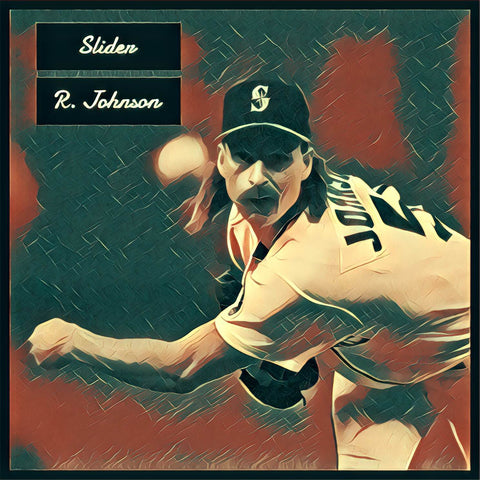
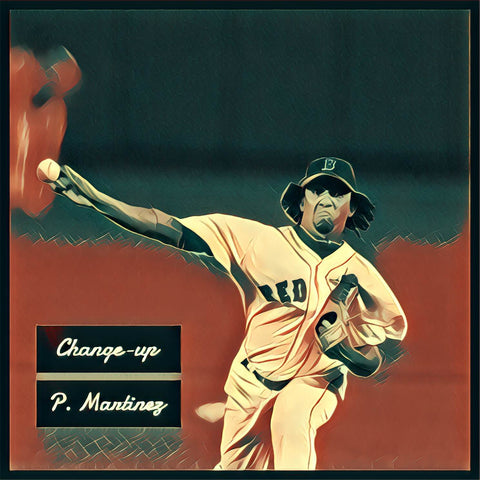
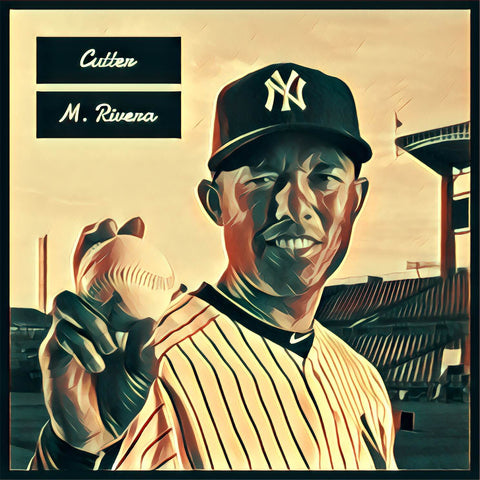
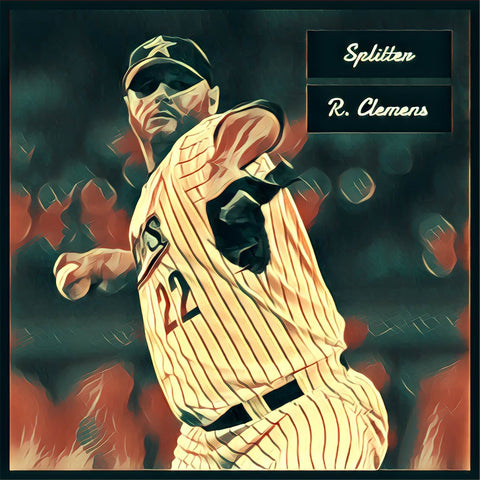



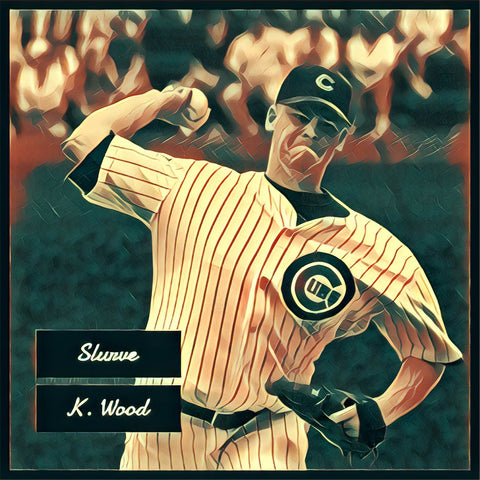
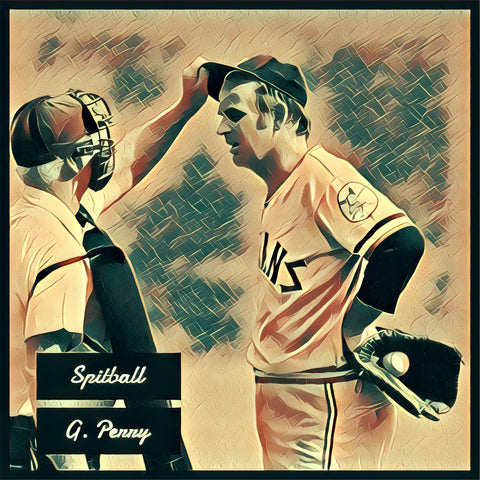
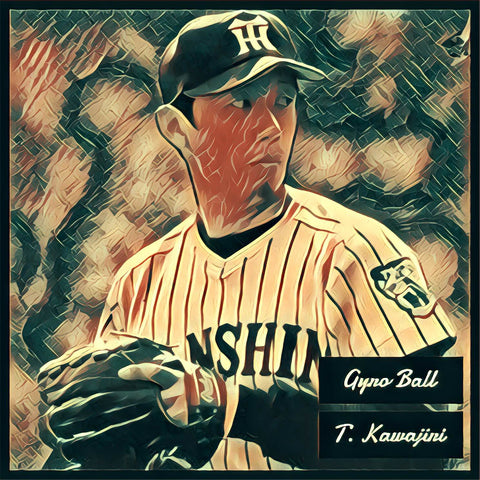

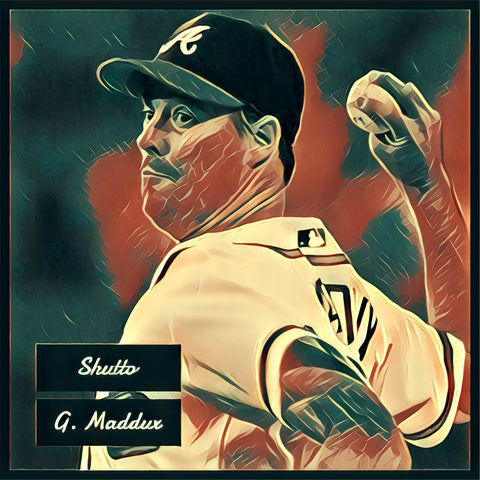
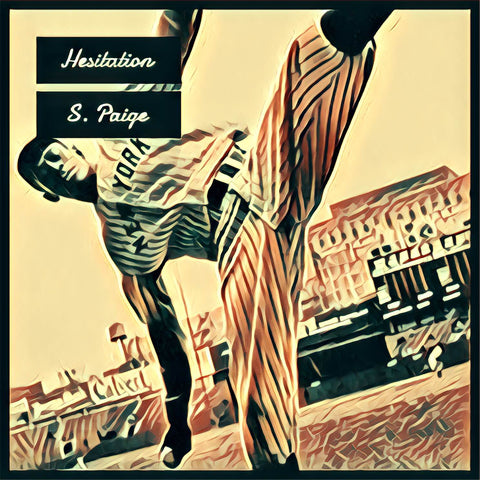
4 comments
Tremendous article! Big ups on having Barry Zito as your back for best 12-6. Enjoyed seeing so many guys bail out thinking they were about to get beaten and then the ball drops in the zone at their knees
Burt Hooten- knuckle curve. Danny Frisella- palm ball
Burt Hooten- knuckle curve ball. Danny Frisella- palm ball.
Best changeup had to be Johan Santana of the Minnesota Twins. In his prime he was dominant with no pitch over 92. I also doubt Wilhelm’s knuckleball was better than Niekro’s.